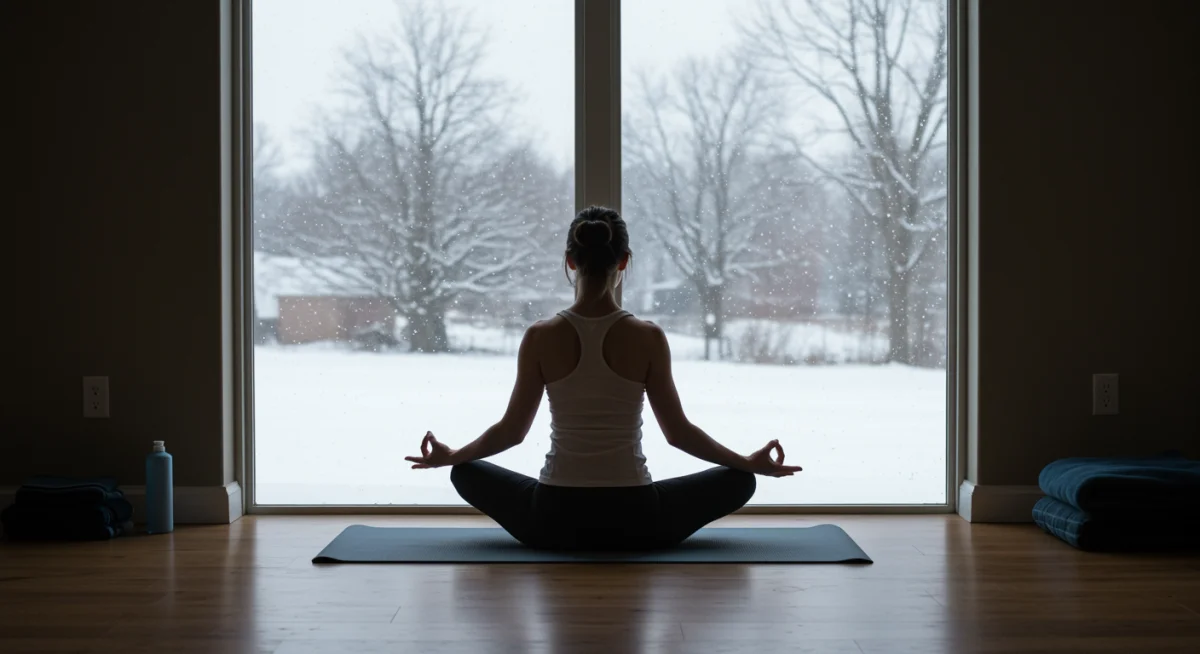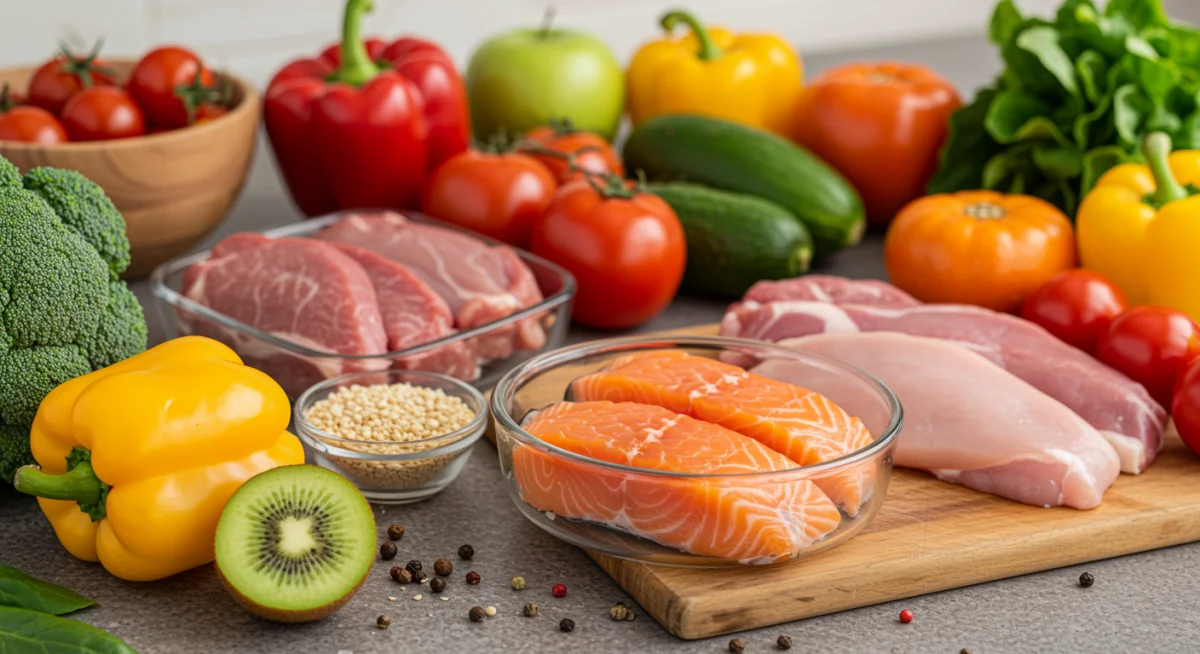Seasonal Fitness: 3 Adjustments for Americans in 2025

To effectively maintain well-being, adapting your fitness routine for seasonal changes is paramount for Americans in 2025, necessitating strategic shifts in exercise type, intensity, and recovery to align with environmental conditions.
As Americans look towards a healthier 2025, one often-overlooked yet critical aspect of sustained wellness is adapting your fitness routine for seasonal changes. The shifting weather patterns, daylight hours, and even societal rhythms profoundly impact our motivation, energy levels, and physical capabilities. Ignoring these environmental cues can lead to plateaus, injuries, or a complete abandonment of fitness goals. This article delves into three essential adjustments designed to help you not only navigate but thrive through every season, ensuring your commitment to health remains unwavering.
Understanding the Impact of Seasonal Shifts on Your Body
The human body is remarkably adaptable, yet it’s also highly sensitive to environmental fluctuations. Seasonal changes, from the scorching heat of summer to the biting cold of winter, directly influence our physiological responses, hormone levels, and even our psychological state. Recognizing these inherent connections is the first step in formulating an effective, year-round fitness strategy.
For instance, longer daylight hours in summer can boost vitamin D production and energy, often leading to increased outdoor activity. Conversely, shorter, darker winter days can trigger seasonal affective disorder (SAD) in some individuals, impacting motivation and energy. Our metabolism also subtly adjusts; colder temperatures might increase energy expenditure to maintain body heat, while warmer months require more focus on hydration and heat management. Understanding these internal and external shifts allows for proactive adjustments rather than reactive measures.
Physiological Responses to Temperature Extremes
Exercising in extreme heat or cold places unique demands on the body. In summer, the risk of heat exhaustion and dehydration increases, requiring careful planning around peak temperatures and ensuring adequate fluid intake. The body works harder to cool itself, diverting blood flow to the skin, which can reduce oxygen delivery to working muscles. In winter, muscles become less pliable, increasing injury risk, and the body expends more energy to stay warm. Proper warm-ups and appropriate layering become critical.
- Heat Acclimatization: Gradually expose your body to warmer temperatures to improve its ability to regulate heat.
- Cold Weather Protection: Dress in layers to trap warmth and protect against wind and moisture.
- Hydration: Essential in all seasons, but crucial in both hot and cold conditions where fluid loss can be deceptive.
The psychological impact is equally significant. The vibrancy of spring and summer can inspire more outdoor activities and social workouts, while the introspection of fall and winter might lead to a preference for indoor, solitary exercises. Acknowledging these preferences can help you choose activities that align with your seasonal mood, making adherence to your routine more sustainable.
Adjustment 1: Modifying Exercise Types and Environments
The most straightforward way to adapt your fitness routine is by changing the types of exercises you perform and where you perform them. This isn’t about giving up on your goals but rather finding alternative, equally effective ways to stay active when outdoor conditions are less than ideal or when your body naturally craves a different kind of movement.
During the warmer months, Americans often gravitate towards outdoor activities. Cycling, hiking, swimming, and running become popular choices, offering the added benefits of fresh air and natural light. These activities can be excellent for cardiovascular health and mental well-being. However, as temperatures drop or rise dramatically, or as daylight dwindles, sticking to these routines can become challenging and even unsafe.
Leveraging Indoor Alternatives for Winter and Extreme Heat
When outdoor conditions become harsh, pivoting to indoor options is a smart move. This could mean joining a gym, investing in home exercise equipment, or exploring new classes. Indoor cycling, swimming in heated pools, group fitness classes like Zumba or aerobics, and various forms of martial arts or dance can provide excellent workouts without exposure to the elements. These options also offer a sense of community and structured guidance, which can be highly motivating.
- Gym Memberships: Access to diverse equipment, classes, and expert trainers.
- Home Workouts: Convenient and budget-friendly, utilizing bodyweight, resistance bands, or online programs.
- Specialized Studios: Yoga, Pilates, barre, or spin studios offer focused training environments.
The key is to maintain variety and engagement. Don’t feel confined to one type of exercise. Spring and fall, with their milder temperatures, often present the best opportunities for blending outdoor and indoor activities, allowing for a dynamic and refreshing approach to fitness. Consider these transitional seasons as opportunities to try new things and cross-train.

Adjustment 2: Strategic Intensity and Volume Adjustments
Beyond changing the type of exercise, intelligently adjusting the intensity and volume of your workouts is crucial for seasonal adaptation. Pushing your body too hard in extreme conditions can lead to injury or burnout, while maintaining a consistent, albeit modified, effort level ensures progress without undue stress.
In the peak of summer, when humidity and heat are high, reducing the intensity of cardio workouts or shortening their duration can prevent overheating. Opt for early morning or late evening sessions when temperatures are lower. Similarly, during winter, while the body might burn more calories to stay warm, the risk of muscle strains increases due to colder muscles. A longer, more thorough warm-up becomes indispensable, and high-impact activities might need to be scaled back slightly.
Listening to Your Body’s Seasonal Cues
Your body provides invaluable feedback. Pay attention to signs of fatigue, changes in energy levels, or persistent soreness. These signals often indicate that your current routine might be out of sync with the season’s demands. For Americans in 2025, understanding that fitness isn’t a linear progression but a cyclical journey is vital for long-term success.
- Periodization: Structure your training into phases, with periods of higher intensity followed by periods of lower intensity or active recovery.
- Active Recovery: Incorporate lighter activities like walking, stretching, or gentle yoga on rest days, especially in transitional seasons.
- Cross-Training: Engage in different forms of exercise to work various muscle groups and prevent overuse injuries.
During colder months, some individuals might find that strength training indoors offers a great way to maintain muscle mass and bone density without the risks associated with outdoor elements. Conversely, the longer days of spring and summer can be ideal for endurance training, allowing for extended runs or bike rides. The key is to be flexible and willing to modify your approach based on how you feel and what the environment dictates.
Adjustment 3: Nutritional and Recovery Support
No fitness routine is complete without proper nutritional and recovery support, and these aspects too require seasonal adjustments. What your body needs to fuel and repair itself can vary significantly throughout the year, impacting performance and overall well-being.
In summer, increased sweating necessitates a greater focus on electrolytes and hydration. Lighter, water-rich foods like fruits and vegetables become even more important. During winter, the body might crave more calorie-dense foods to help maintain warmth and energy, but it’s crucial to distinguish between genuine physiological need and emotional eating. Focusing on nutrient-dense, warming meals can be beneficial.
Optimizing Hydration and Micronutrient Intake
Hydration is a year-round priority, but the methods and emphasis can shift. In hot weather, plain water might not be enough; electrolyte-rich drinks or foods can help replenish lost minerals. In colder weather, while thirst might be less pronounced, the body still loses fluids through breathing and sweating under layers. Warm herbal teas or broths can contribute to hydration while providing comfort.

- Seasonal Produce: Incorporate fruits and vegetables that are in season, as they are often more nutrient-dense and flavorful.
- Vitamin D Supplementation: Consider supplementation during winter months, especially for Americans living in northern latitudes, due to reduced sun exposure.
- Sleep Hygiene: Prioritize 7-9 hours of quality sleep, as seasonal changes can disrupt circadian rhythms.
Recovery also plays a vital role. In warmer months, cooling down effectively after a workout is essential to bring the body temperature back to normal. In colder months, a proper cool-down can prevent muscles from seizing up. Stress management techniques, such as mindfulness or meditation, can also be particularly helpful during periods of seasonal transition, helping to mitigate any psychological impact on your fitness journey. Aligning your diet and recovery strategies with the seasons ensures your body has the resources it needs to support your activity levels and maintain optimal health.
Embracing the Rhythms of Nature for Consistent Fitness
For Americans in 2025, successfully adapting your fitness routine for seasonal changes means more than just swapping out activities; it involves cultivating a deeper awareness of your body’s needs and the natural world’s rhythms. This holistic approach allows for a more sustainable and enjoyable fitness journey, free from the rigid expectations that often lead to burnout.
Consider the transition periods between seasons as opportunities for reflection and planning. As autumn approaches, begin to scout for indoor workout options or adjust your outdoor schedule to accommodate earlier sunsets. When spring arrives, gradually reintroduce outdoor activities, allowing your body to reacclimate to warmer temperatures and increased daylight. This proactive planning minimizes disruptions and keeps you engaged.
The Psychological Benefits of Seasonal Adaptation
Beyond the physical advantages, adapting your routine seasonally can significantly boost your mental well-being. The variety in workouts keeps boredom at bay and introduces new challenges, fostering a sense of accomplishment. Aligning your activities with the natural environment can also enhance your connection to nature, which has proven psychological benefits, including reduced stress and improved mood.
- Mindful Movement: Engage in activities that connect you with the present moment, such as walking in nature or practicing yoga outdoors.
- Goal Re-evaluation: Periodically reassess your fitness goals to ensure they remain realistic and motivating given the seasonal context.
- Social Engagement: Leverage seasonal opportunities for group activities, like summer sports leagues or winter hiking clubs, for added motivation and social connection.
By embracing the cyclical nature of fitness, rather than fighting against it, you empower yourself to maintain a consistent and effective routine year-round. This flexibility is not a sign of weakness but a testament to a smart, resilient approach to health and wellness. It’s about working with nature, not against it, to achieve your fitness aspirations.
Building a Resilient Fitness Plan for All Seasons
Creating a fitness plan that withstands the test of all four seasons requires foresight, flexibility, and a commitment to listening to your body. It’s about building resilience into your routine, ensuring that no matter what the weather or time of year, you have a viable and enjoyable path to staying active.
Start by identifying your core fitness goals and then brainstorming how these can be achieved through various activities across different seasons. If your goal is cardiovascular endurance, consider outdoor running in spring/fall, swimming in summer, and indoor cycling or elliptical training in winter. For strength, a year-round gym membership or a well-equipped home gym provides consistency.
Key Components of a Sustainable Seasonal Plan
A resilient plan incorporates a mix of exercise types, adjustable intensity levels, and robust recovery strategies. It also acknowledges the importance of mental well-being and seeks to integrate activities that support both physical and psychological health. The objective is to create a dynamic blueprint that can be tweaked rather than overhauled with each seasonal shift.
- Diverse Activity Portfolio: Have a range of indoor and outdoor activities ready for different conditions.
- Flexible Scheduling: Be prepared to adjust workout times or days based on weather forecasts or personal energy levels.
- Holistic Self-Care: Integrate nutrition, sleep, and stress management as integral parts of your fitness strategy.
The habit of regular physical activity is more important than the specific activity itself. By making seasonal adjustments, you reinforce this habit, ensuring that fitness remains a consistent and enjoyable part of your life. This approach not only prevents stagnation but also opens up new avenues for exploration and enjoyment, keeping your fitness journey fresh and exciting through every turn of the calendar.
Overcoming Common Seasonal Fitness Challenges
Even with the best intentions and strategies, seasonal changes can present unique challenges that test our commitment to fitness. For Americans in 2025, anticipating and preparing for these hurdles is key to maintaining consistency and preventing setbacks. Understanding that fluctuations are normal allows for a more forgiving and effective approach.
One common challenge is motivation, particularly during darker, colder months. The allure of a warm couch can often outweigh the desire for a workout. Another hurdle is time constraint; shorter daylight hours might mean less opportunity for outdoor activities after work. Furthermore, seasonal illnesses, like colds and flu, can temporarily derail even the most dedicated routines.
Strategies for Maintaining Motivation and Consistency
To combat these challenges, proactive measures are essential. Scheduling workouts in advance, finding an accountability partner, or investing in workout gear that makes outdoor exercise more comfortable in varied conditions can all make a significant difference. It’s also important to be kind to yourself; a missed workout or a period of reduced intensity is not a failure, but an opportunity to reassess and restart.
- Set Realistic Goals: Adjust your expectations seasonally; a winter goal might be maintenance, while a spring goal could be progression.
- Find a Workout Buddy: Social support can be a powerful motivator, especially when energy levels are low.
- Reward System: Create small, non-food rewards for consistent effort through challenging periods.
Dealing with seasonal illnesses means prioritizing rest and recovery when you’re unwell, rather than pushing through. Returning to exercise gradually once you’ve recovered is crucial to prevent relapses or further injury. By acknowledging these common challenges and having strategies in place to overcome them, you can build a more resilient and sustainable fitness habit that truly lasts all year long.
| Key Adjustment | Brief Description |
|---|---|
| Exercise Type & Environment | Shift between outdoor and indoor activities based on weather and daylight. |
| Intensity & Volume | Adjust workout effort and duration to match seasonal physiological demands. |
| Nutrition & Recovery | Tailor diet and rest strategies to support seasonal energy needs and recovery. |
| Mindset & Flexibility | Cultivate adaptability and listen to your body’s cues for sustainable fitness. |
Frequently Asked Questions About Seasonal Fitness
Hot weather increases the risk of dehydration and heat stress, requiring the body to work harder to cool itself. Cold weather stiffens muscles, raising injury risk, and demands more energy to maintain core body temperature. Both require specific adaptations in hydration, clothing, and warm-up/cool-down routines for optimal safety and performance.
For winter, excellent indoor options include strength training, group fitness classes like Zumba or spin, swimming in heated pools, yoga, Pilates, and using cardio machines such as treadmills or ellipticals. Home workouts with bodyweight or resistance bands also provide effective alternatives, ensuring consistent activity despite cold weather.
Yes, hydration needs vary seasonally. In hot weather, increased sweating necessitates more water and potentially electrolyte replacement. In colder weather, although thirst may be less apparent, the body still loses fluids. Warm beverages like herbal teas can contribute to hydration and comfort, making consistent fluid intake important year-round.
Maintaining motivation during seasonal shifts involves setting realistic goals, finding an accountability partner, experimenting with new activities to prevent boredom, and prioritizing rest. Recognizing that fluctuations in energy are normal and being flexible with your routine can help sustain motivation and prevent burnout throughout the year.
Nutrition is crucial for seasonal adaptations. In summer, focus on hydrating, water-rich foods and electrolytes. In winter, opt for nutrient-dense, warming meals to support energy and warmth, while considering vitamin D supplementation. Aligning your diet with seasonal produce and your body’s changing needs optimizes performance and recovery.
Conclusion
Mastering the art of adapting your fitness routine for seasonal changes is not merely a suggestion but a cornerstone for sustainable health and wellness for Americans in 2025. By thoughtfully modifying exercise types, strategically adjusting intensity, and providing adequate nutritional and recovery support, you can transform potential seasonal hurdles into opportunities for growth and variety. This flexible and responsive approach ensures that your fitness journey remains consistent, enjoyable, and effective, empowering you to maintain peak physical and mental well-being through every season the year brings.





